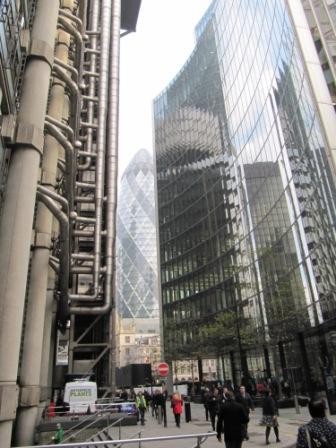The D & O Diary Options Backdating Act Two
Post on: 11 Август, 2015 No Comment

A periodic journal containing items of interest from the world of Directors and Officers Liability, with occasional commentary.
Click on the image above to go to the new site
Tuesday, October 31, 2006
Options Backdating: Act Two?
One of the standard features of most articles discussing the options backdating scandal has been the obligatory statement that backdating largely disappeared after the 2002 passage of the Sarbanes-Oxley Act. as a result of the Act’s requirement (in Section 403(a)(2)) that all transactions in the company’s shares involving directors or officers must be documented to the SEC before the end of the second business day following the day on which the transaction took place. But a new report entitled The Backdating Scandal’s Second Act?, shareholder advisory firm Glass Lewis raises doubt about whether Sarbanes-Oxley eliminated the practice after all, and suggests that there may be a whole new round of options timing revelations ahead.
According to news reports (here and here ), Glass Lewis found that many companies have not been complying with the timing requirements for filing options related paperwork on SEC Form 4. The report found that the SEC rarely cracks down on companies for filing their paperwork late, which allows the opportunity to change the actual date the stock options were granted to a day when the stock was trading at a lower price. The firm reviewed hundreds of thousands of Form 4 filings from January 2004 to June 2006 and pinpointed some 6,000 questionably timed stock-options grants that were dislosed late to investors. Glass Lewis found that in several instances the price of company shares increased materially between the purported grant date and the date of the filing.
One of the companies Glass Lewis identified in the report is Silicon Image. According to news reports (here ), Glass Lewis found that several Silicon Image officers were late filing Form 4s in connection with options grants during 2004, 2005 and 2006. In 11 out of 12 grants during that period, Silicon Image’s stock price increased between the grant date and the (late) filing date. According to an October 31, 2006 San Jose Mercury News article (here ), Silicon Image has launched an internal review of its option practices. The Glass Lewis Report cited eight other companies whose Form 4 filings showed a similar jump in share price between the grant date and the filing date.
Based on this analysis, Glass Lewis questioned whether the options timing scandal might be about to enter a second act, involving potentially hundreds of companies that may have backdated options grants even after the 2002 Sarbanes-Oxley reforms. The report also notes that even where the company’s Form 4 filing were unintentionally or inadvertently filed late, the company’s regulatory filing practices still raise concerns about the company’s internal controls.
It is too early to tell whether or not the Glass Lewis second act analysis really does portend a significant new phase in the options timing scandal. It is worth noting that the original trigger for the initial round of options backdating investigations was a similar academic analysis of options practices. And even though there are as yet no claims based on these kind of second act allegations, the possibility of these kinds of claims does pose a new challenge for D & O underwriters. The underwriters must now consider whether claims might yet arise based on allegations about post-2002 late Form 4 filings and stock price increases between the grant date and the filing date. Well-advised companies will take steps now to able during their D & O insurance renewal to substantiate the timeliness of their Form 4 filings, or in general to be able to respond to questions about their regulatory filing practices.
Update: A November 9, 2006 article in the Minneapolis Tribune (here ) describes a lawsuit that has been filed against Digital River. raising options backdating allegations. The allegations are based in part on Digital River’s habit of being late with its Form 4 filings relating to options grants. Digital River is one of the nine companies named in the Glass Lewis study.

Options Backdating Litigation Update: The D & O Diary’s running tally of litigation arising from options timing allegations (here ) was updated today. According to the current tally, 95 companies have been sued as nominal defendants in shareholders derivative lawsuits based on options timing allegations. The number of options timing securities fraud lawsuits stands at 20.
Inside the Milberg Weiss Indictment: Readers who can’t get enough of the details surrounding the indictment of the Milberg Weiss firm and two of its partners will definitely want to read the October 31, 2006 Fortune article entitled The Law Firm of Hubris, Hypocrisy & Greed(here ). The article is written by Peter Elkind, co-author of The Smartest Guys in the Room , the standard volume on Enron’s demise. The article contains detailed descriptions of the firm’s interaction with the paid plaintiffs identified in the indictment.
The article also has a fascinating account of the reaction of the key players to the criminal investigation, including in particular Mel Weiss. According to the account, as the possibility of indictment moved closer and as the firm’s negotiations with prosecutors to avoid indictment fell apart, Weiss repeatedly assured the partnership that it faced no danger. He refused to bring in an outside firm to investigate. He also refused to turn over decisions about the investigation to nontargeted partners. And in the final stages before the indictment, the firm remained controlled by people in the crosshairs (including Weiss) and so refused to meet prosecutors’ demands that might have averted the firm’s indictment. In other words, he was conducting himself as he has so often alleged that entrenched public company management behaves when management’s interests conflict with those of shareholders. Pretty ironic.
The Fortune article makes for some pretty interesting reading, and includes a more detailed account of the facts and circumstances surrounding the Cooperman painting insurance fraud scam and its connection to the Milberg indictment, about which I previously wrote here (my prior post includes pictures of the now infamous Cooperman paintings).
And Under No Circumstances Should You Read This Story: Read the story, here .














